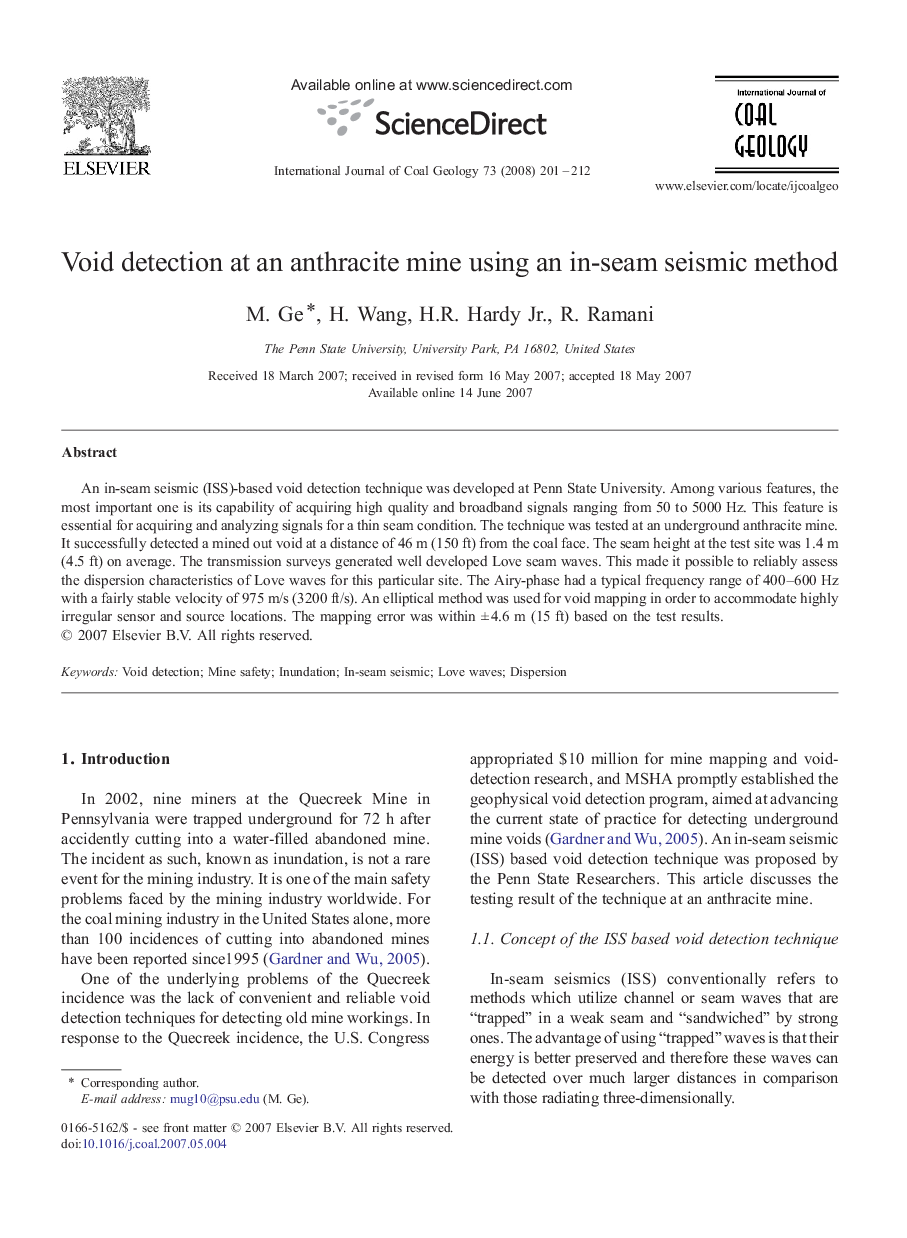| Article ID | Journal | Published Year | Pages | File Type |
|---|---|---|---|---|
| 1754120 | International Journal of Coal Geology | 2008 | 12 Pages |
An in-seam seismic (ISS)-based void detection technique was developed at Penn State University. Among various features, the most important one is its capability of acquiring high quality and broadband signals ranging from 50 to 5000 Hz. This feature is essential for acquiring and analyzing signals for a thin seam condition. The technique was tested at an underground anthracite mine. It successfully detected a mined out void at a distance of 46 m (150 ft) from the coal face. The seam height at the test site was 1.4 m (4.5 ft) on average. The transmission surveys generated well developed Love seam waves. This made it possible to reliably assess the dispersion characteristics of Love waves for this particular site. The Airy-phase had a typical frequency range of 400–600 Hz with a fairly stable velocity of 975 m/s (3200 ft/s). An elliptical method was used for void mapping in order to accommodate highly irregular sensor and source locations. The mapping error was within ± 4.6 m (15 ft) based on the test results.
